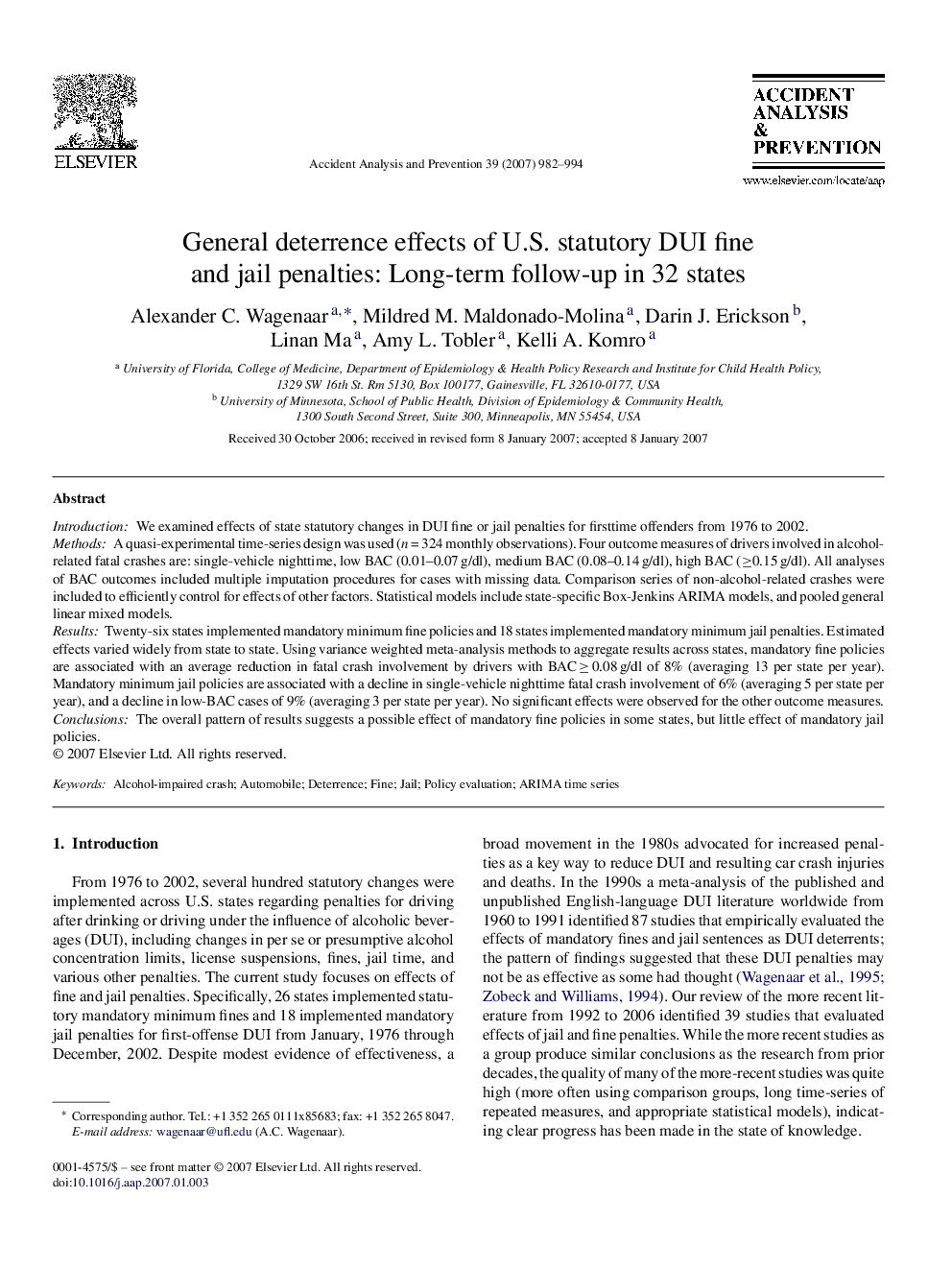| Article ID | Journal | Published Year | Pages | File Type |
|---|---|---|---|---|
| 573728 | Accident Analysis & Prevention | 2007 | 13 Pages |
IntroductionWe examined effects of state statutory changes in DUI fine or jail penalties for firsttime offenders from 1976 to 2002.MethodsA quasi-experimental time-series design was used (n = 324 monthly observations). Four outcome measures of drivers involved in alcohol-related fatal crashes are: single-vehicle nighttime, low BAC (0.01–0.07 g/dl), medium BAC (0.08–0.14 g/dl), high BAC (≥0.15 g/dl). All analyses of BAC outcomes included multiple imputation procedures for cases with missing data. Comparison series of non-alcohol-related crashes were included to efficiently control for effects of other factors. Statistical models include state-specific Box-Jenkins ARIMA models, and pooled general linear mixed models.ResultsTwenty-six states implemented mandatory minimum fine policies and 18 states implemented mandatory minimum jail penalties. Estimated effects varied widely from state to state. Using variance weighted meta-analysis methods to aggregate results across states, mandatory fine policies are associated with an average reduction in fatal crash involvement by drivers with BAC ≥ 0.08 g/dl of 8% (averaging 13 per state per year). Mandatory minimum jail policies are associated with a decline in single-vehicle nighttime fatal crash involvement of 6% (averaging 5 per state per year), and a decline in low-BAC cases of 9% (averaging 3 per state per year). No significant effects were observed for the other outcome measures.ConclusionsThe overall pattern of results suggests a possible effect of mandatory fine policies in some states, but little effect of mandatory jail policies.
